TEN YEARS AGO TODAY: COMPLETE TEST OF THE 2013 HONDA CRF450
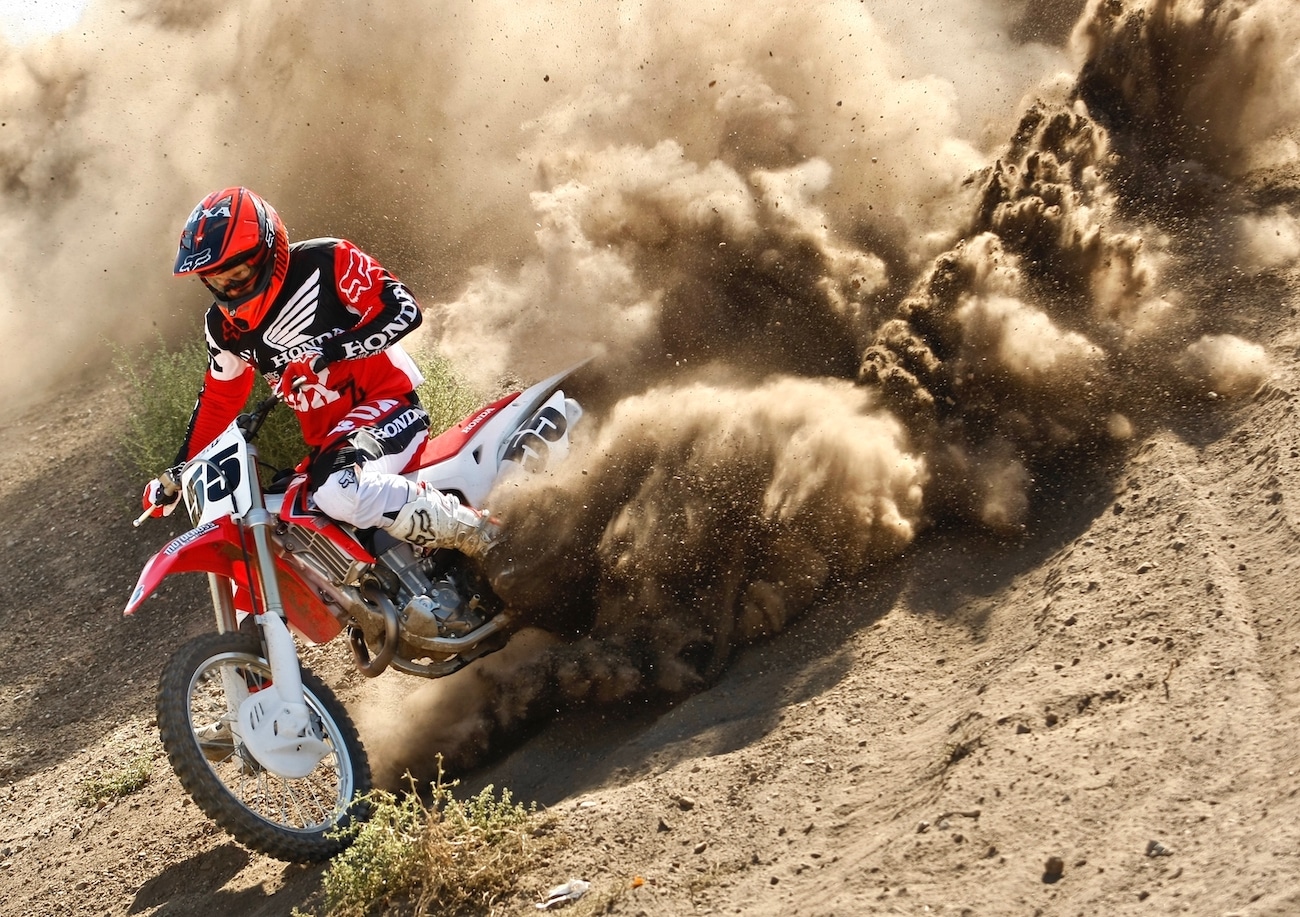
This is an archived MXA test of the 2013 Honda CRF 450 from the October 2012 issue of Motocross Action Magazine. Get your MXA subscription today.
A: Yes. As an overall package the 2013 Honda CRF450 is significantly better than the 2012 CRF450 (and by proxy the 2009, 2010 and 2011 CRF450).
Q: WHAT ARE THE MOST SIGNIFICANT CHANGES FOR 2013?
A: Honda’s engineers knew that they had to address four years worth of complaints about the 2009 through 2012 CRF450. Here is a list of their remedial actions.
(2) Clutch. Back in 2009 Honda introduced its four-spring clutch and 15 minutes after they unveiled it started slipping. It slipped for the next four years. Finally, for 2013, Honda put the eight-plate, six-spring clutch from the 2008 Honda CRF450 back into the bike.
(5) Plastic. Husqvarna and KTM were ridiculed a few year ago for their edgy “crease design” influence. Guess what? A close look at the 2013 CRF450 reveals more KTM and Husqvarna flavor than old school CR design thought.
A: Pitifully. Given the changes for 2013 the MXA test crew expected a big increase in low-to-mid power (thanks to the larger exhaust valves and increased compression ratio)–and what we got was a small improvement from 5000 rpm to 6500 rpm. After that it was mostly disappointment. Peak horsepower on the 2013 CRF450 is 51.55 horsepower. For comparison the 2012 Honda CRF450 made 52.59 horsepower. Even worse for dyno aficionados, the 2013 Kawasaki KX450F belts out 55.05 horsepower and the 2013 KTM 450SXF pumps out an incredible 56.95 horsepower. You don’t need a degree from MIT to see than the KTM makes 5-1/2 horsepower more than the CRF450. In fact, the weakest horsepower number from any of Honda’s competitors (2013 Suzuki RM-Z450 at 54.10 horsepower) is still 2-1/2 horses more than the CRF450.
That said, the 2013 Honda CRF450 could use more horsepower. It could turn over brisker. The power could be more usable across a wider range. Every test rider made note of three things on their test reports;
(3) Flat top-end. After 9000 rpm the 2013 CRF450 goes flat. After nine grand the Honda makes noise, not power. No thrust means that you need to shift.
Q: SO IS THE 2013 CRF450 A DOG?
A: No, it is actually an effective and raceable powerband. For a rider coming off a 2009-2012 CRF450, he will not be disappointed because the power feels torquier on the bottom and pulls across the same rpm spread as the older CRFs. Perhaps a KX450F or KTM 450SXF transplant would feel that the CRF450 was too slow–and they wouldn’t be wrong.
All that said, with lower gearing and good knowledge of how to make the most of the CRF450 powerband, you can go fast on the CRF450 by taking advantage of the easy-to-use power delivery. It can go fast because the rider can use all the power it has without fear of white knuckles or wide eyeballs.
A: We don’t know why Honda waited four years to make this change, but we are glad they finally did. The new clutch is much better, but maybe our memories are fuzzy because it doesn’t seem as good as the 2008 clutch it is based on. Although it doesn’t slip and holds up to abuse well, it has a spongy feel at the lever that we don’t remember. The 2013 Honda clutch has a judder spring and one downsized plate in the clutch pack. We remove the jutter spring and small plate and replaced them with one full-size plate.
Q: WHAT IS MXA’S OPINION OF THE CRF450’S TWIN PIPES?
A: We think they are stupid, redundant, restrictive, heavy, expensive and vanity engineering for someone in the Honda R&D department. And they aren’t all that quiet. Our 2013 Honda CRF450 failed the 115 dB two-meter-max test at 116.1. Plus, one touch of the subframe or shock body after a race will reveal a disturbing heat sink effect from all that hot tubing snaking around the shock and airbox.
How do we really feel? When Honda first tried this idea on the 2006 CRF250 they just bolted an extra muffler on an existing design and made up reasons for why it was better. It took a few years of consumer resistance, but Honda finally gave up on it. For 2013 the twin pipe idea is better thought out. The subframe and muffler canisters have been redesigned so that they can be sucked up under the body work and moved forward. This gives them centralization of mass credibility. Maybe it is just us, but a motocross bike doesn’t need more parts to fail, get damaged in a crash or fall off. Thumbs down…the same thumbs that we used back in 2006.
Q: HOW GOOD ARE THE KAYABA PSF AIR FORKS AIR FORKS?
The air replaces the coil spring, but it does not take the place of damping adjustments. Once you find you’re perfect air pressure, do not rely on the air pressure to make changes to the way the forks feel under compression or rebound. The compression and rebound clickers are still the best tools for this job.
Q: DOES THE 2013 CRF450 HANDLE BETTER THAN THE 2012 MODEL?
A: Yes, yes, yes. Finally the Honda CRF450 will turn-in at the entrance of a turn with crisp authority. Turn initiation on the 2013 CRF450 is its best trait. The old 2009 to 2012 CRF450s were vague at turn-in, indecisive from the center out and loose on the exit. It wasn’t unusual for the Honda CRF450 rider to have to make mid-turn adjustments to the steering. Not now! The 2013 Honda turns great.
The more the MXA wrecking crew raced the 2013 CRF450 the more we were able to push the CRF envelope–a envelope that for the last few years was a few stamps short of delivery. If you are looking for a straight across comparison, the 2013 is more Suzuki-ish than Kawsaki-ish. We liked it…and we haven’t said that for four long years.
Q: WHAT WOULD WE CHANGE ON THE 2013 HONDA CRF450?
A: That’s easy. This bike is slow. Yes, it does have a nice powerband and it is easy to use, but those are phrases that are always bantered about to describe “slow” bikes. We know that CRF450 engines can be made to produce more power than a feeble 51.55 horsepower. That is 5.4 horses less than what the KTM 450SXF makes and the KTM has a nice powerband and is easy to use also. Before Honda should waste time and R&D dollars adding dual pipes, which don’t make more power or pass the two-meter-max sound test, they need to address the core issue instead of passing the burden of finding power to their consumers.
Q: WHAT SHOULD YOU LOOK OUT FOR?
A: For some unexplained reason, the countershaft sprocket on the 2013 engine is 3mm outboard from 2012. To compensate Honda made the hub flange 3mm thicker so that the rear sprocket would line up with the countershaft. No big deal, unless you own spare Kite, Talon, RAD, TCR or stock Honda wheels. If you do, don’t run them. That measly little 3mm translates into 1/8-inch and that is more than enough to cause your bike to throw the chain.
(7) Power. You would expect that bigger exhaust valves, more compression and new cam timing would pump up the ponies. Wrong. The 2013 only makes more power than the 2012 CRF450 engine from 4500 rpm to 5800 rpm, after that it makes less all the way to sign off. And sign-off is misleading on the CRF450 engine because even though it will rev to 11,000 rpm, it goes flat at 8200 rpm. That means that you can rev it all you want after 8200, but it will not go any faster.The 2013 CRF450 doesn’t even make as much horsepower as the KTM 350SXF.
Q: WHAT DID WE LIKE?
A: The like list:
(1) Gas tank. Since the twin-spar frame rails were lowered 40mm there is more room for fuel. Capacity is increased by one-tenth of a gallon. It doesn’t sound like much…until it’s all you have left.(2) Schrader valves. Once you buy a bike with air forks you are a slave to their air pressure. Checking the air pressure on a KX450F is a hassle because it requires a special adaptor. Honda makes it easier with an exposed Schrader valve on top of the fork cap.
(3) Price. At $8440 Honda was able to keep the retail price the same as last year.
(4) Clutch. It cost every hardcore CRF450 owner over $800 to upgrade to a six-spring Hinson clutch for the last four years. Honda finally fixed their most blatant flaw.
(5) HPSD. The Honda steering damper allows the rider to tone down head shake. The stock clicker setting is 10 out.
(6). Air filter. The reshaped air filter is easier to get out of the frame without knocking dirt down into the intake tract.
2013 MXA HONDA CRF450 SETUP SPECS
This is how we set our Honda CRF450 up for racing. We offer it as a guide to help you find your own sweet spot.


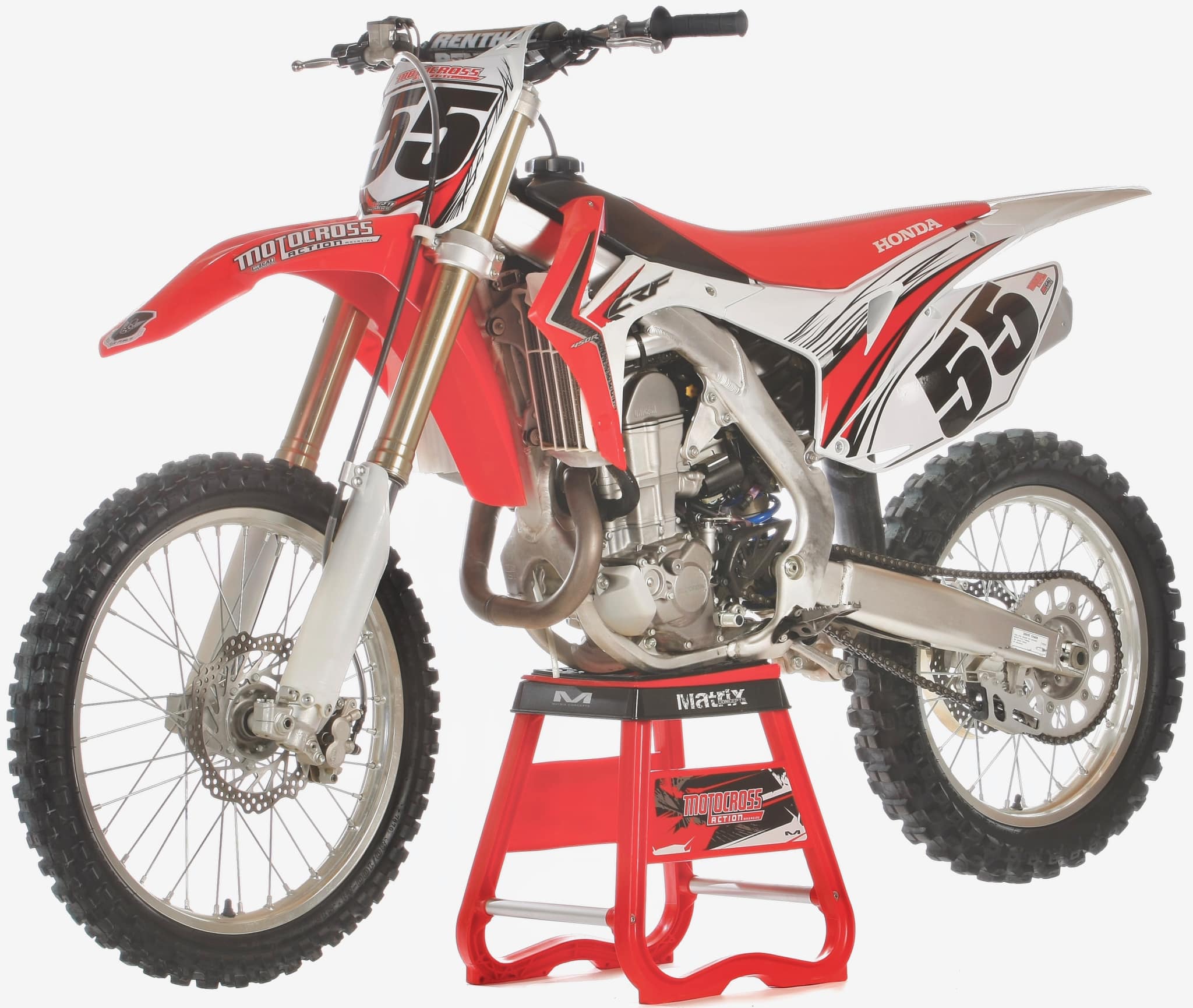
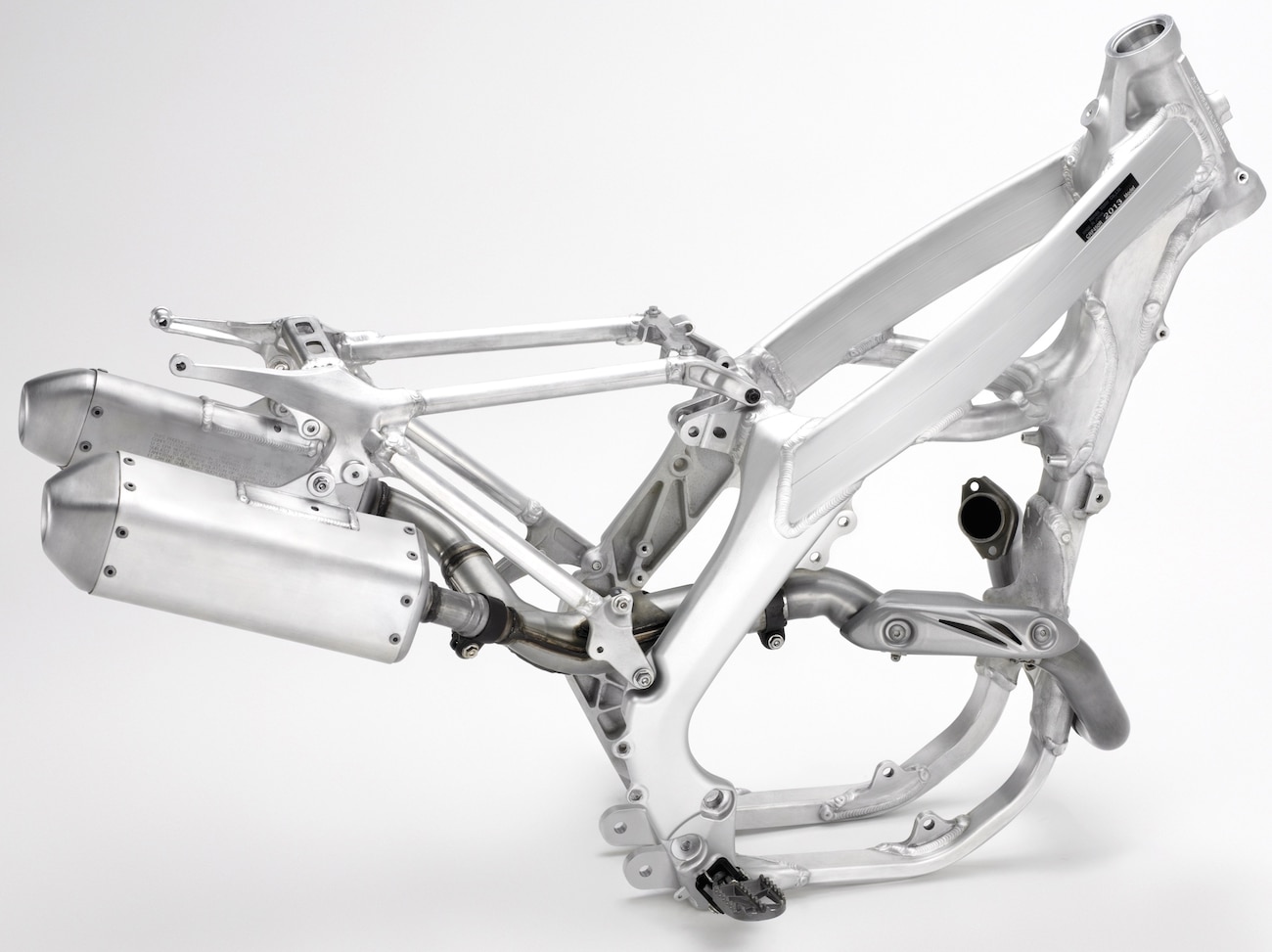
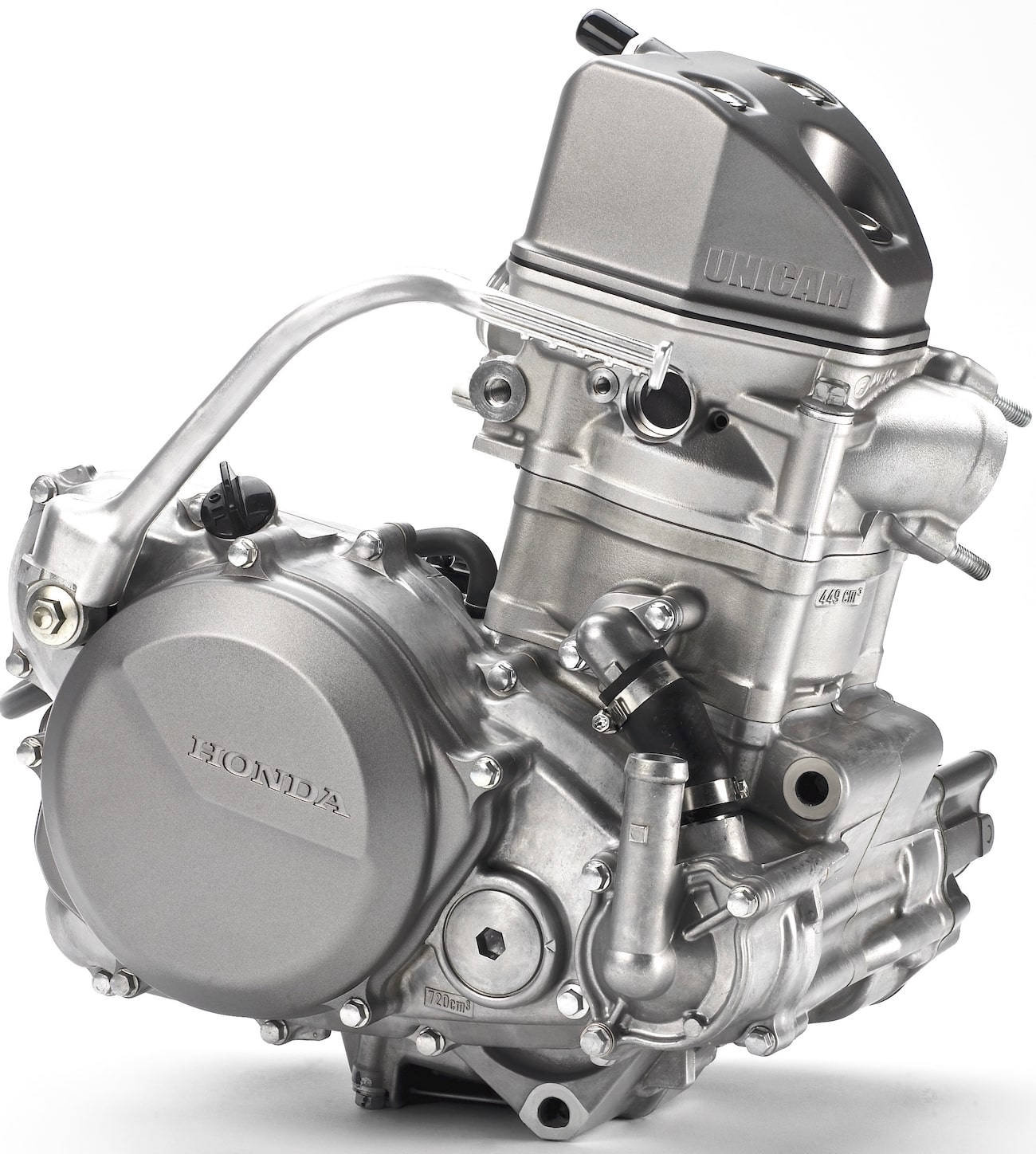

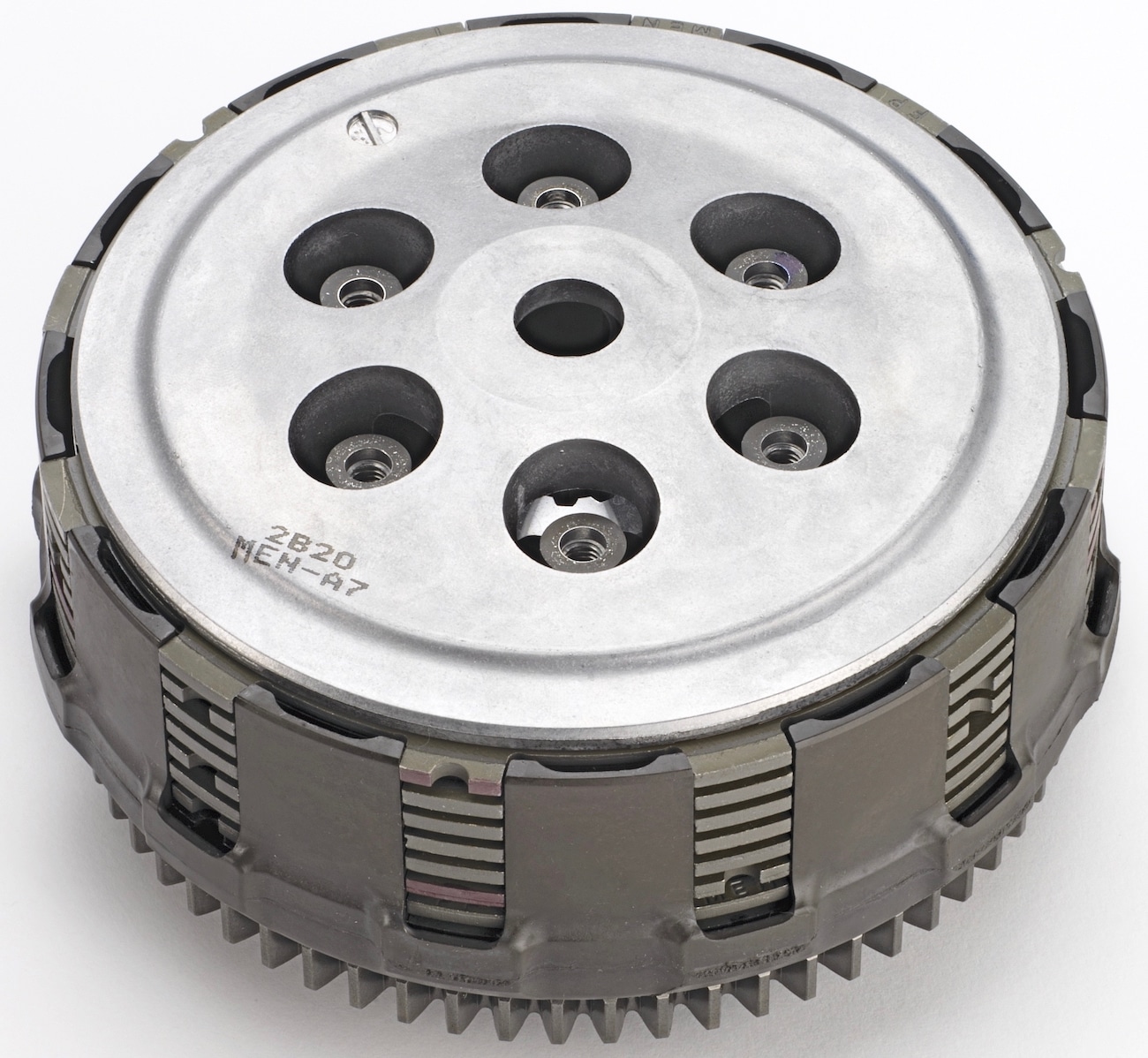
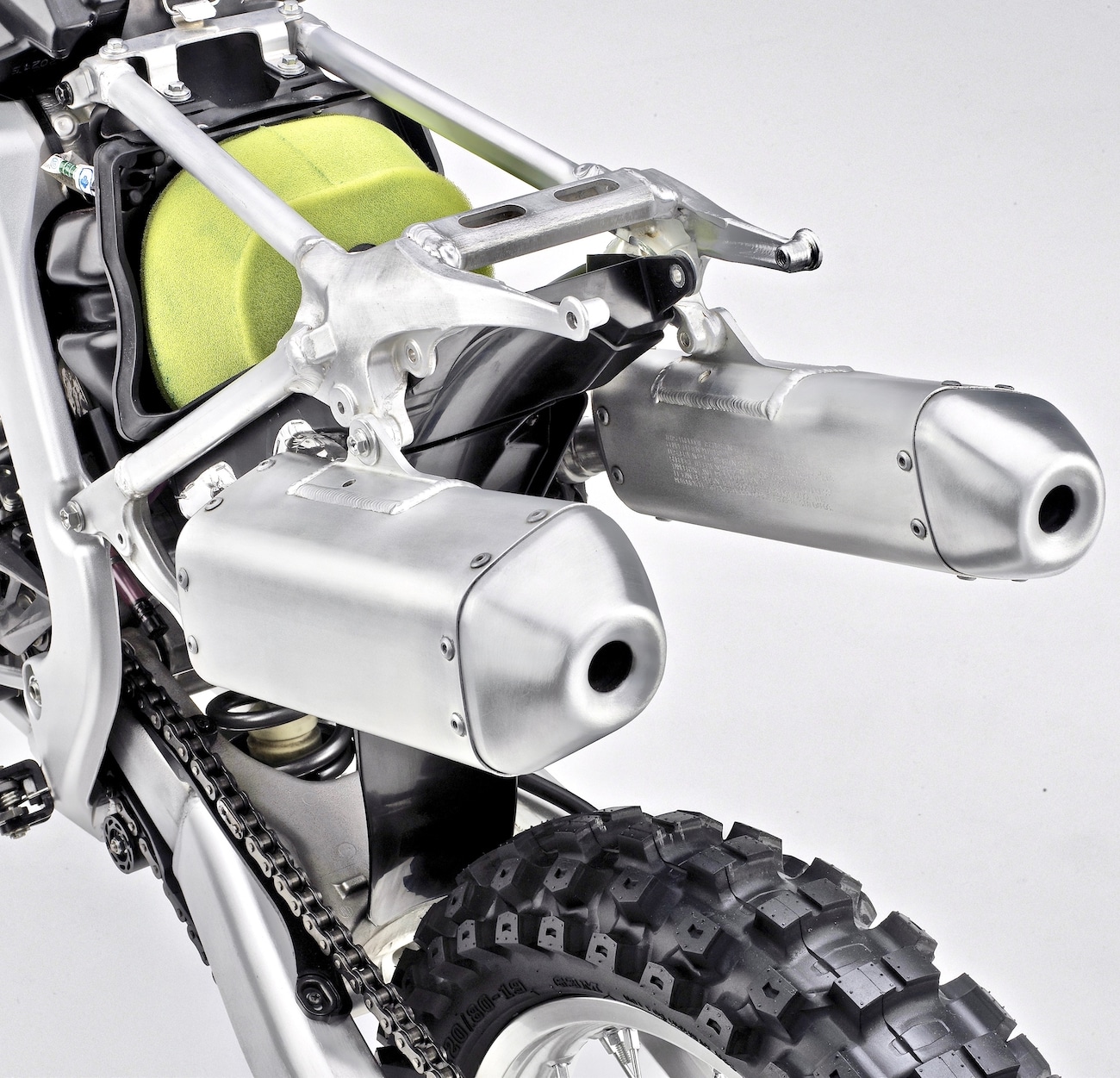

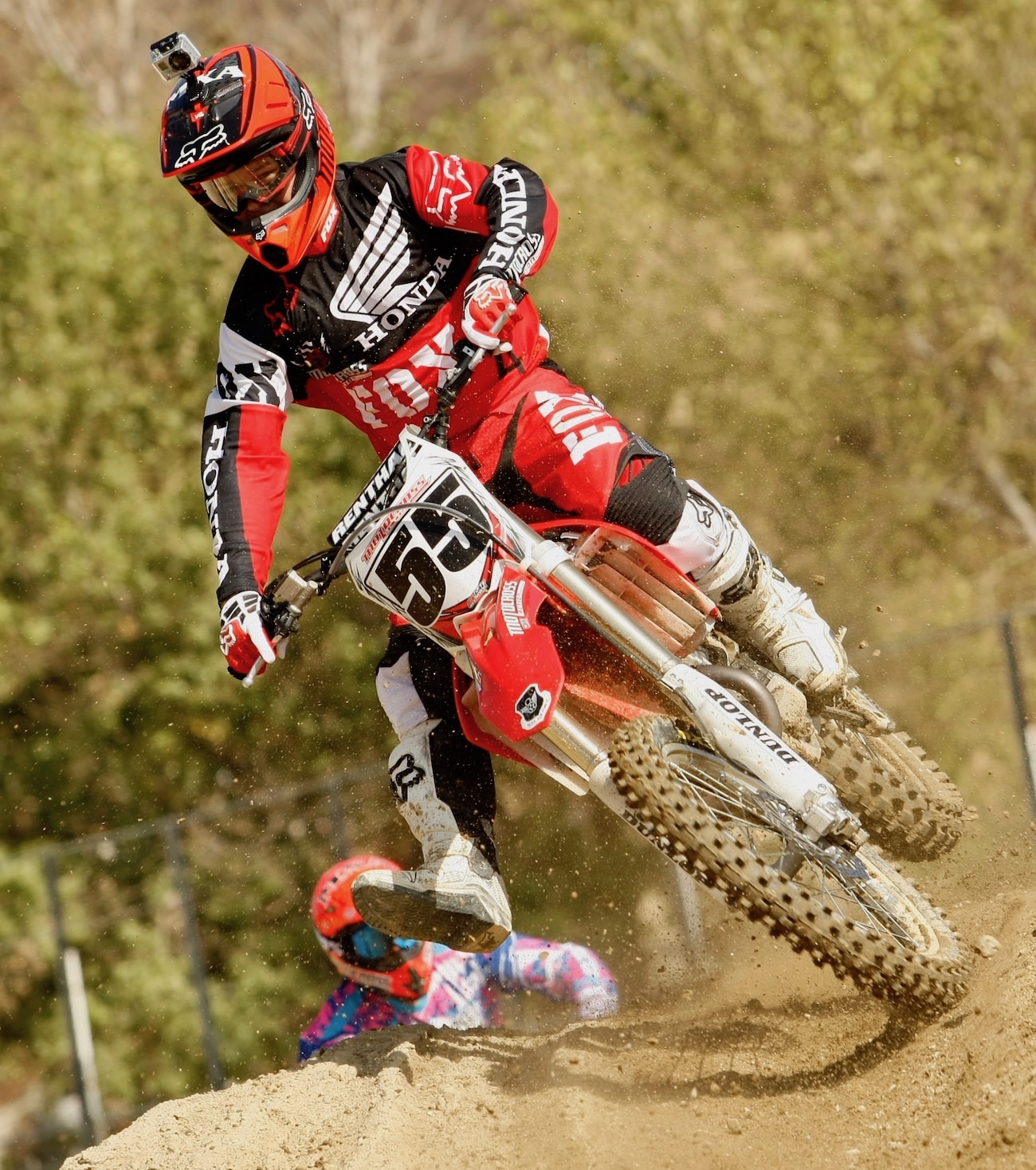
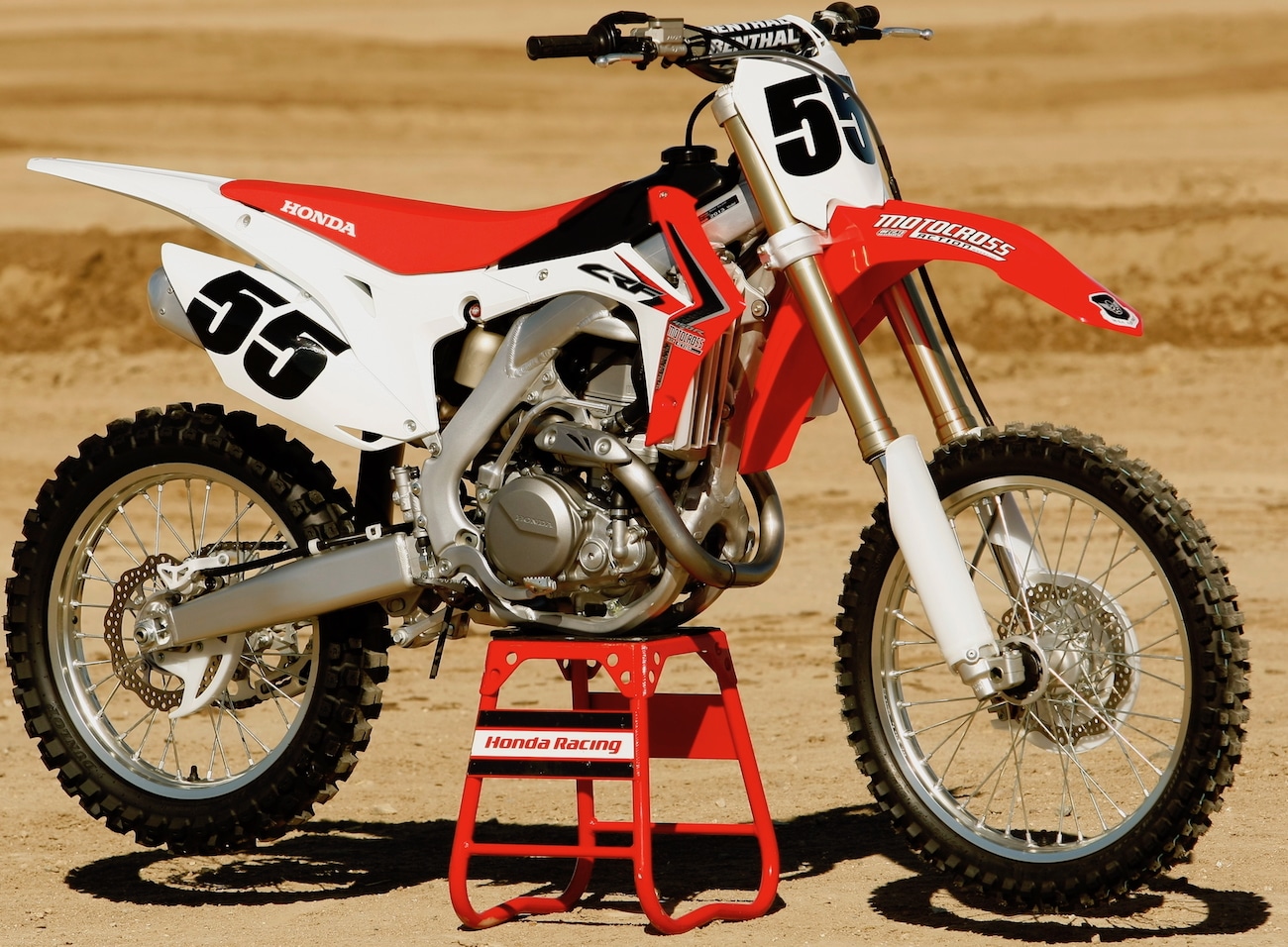

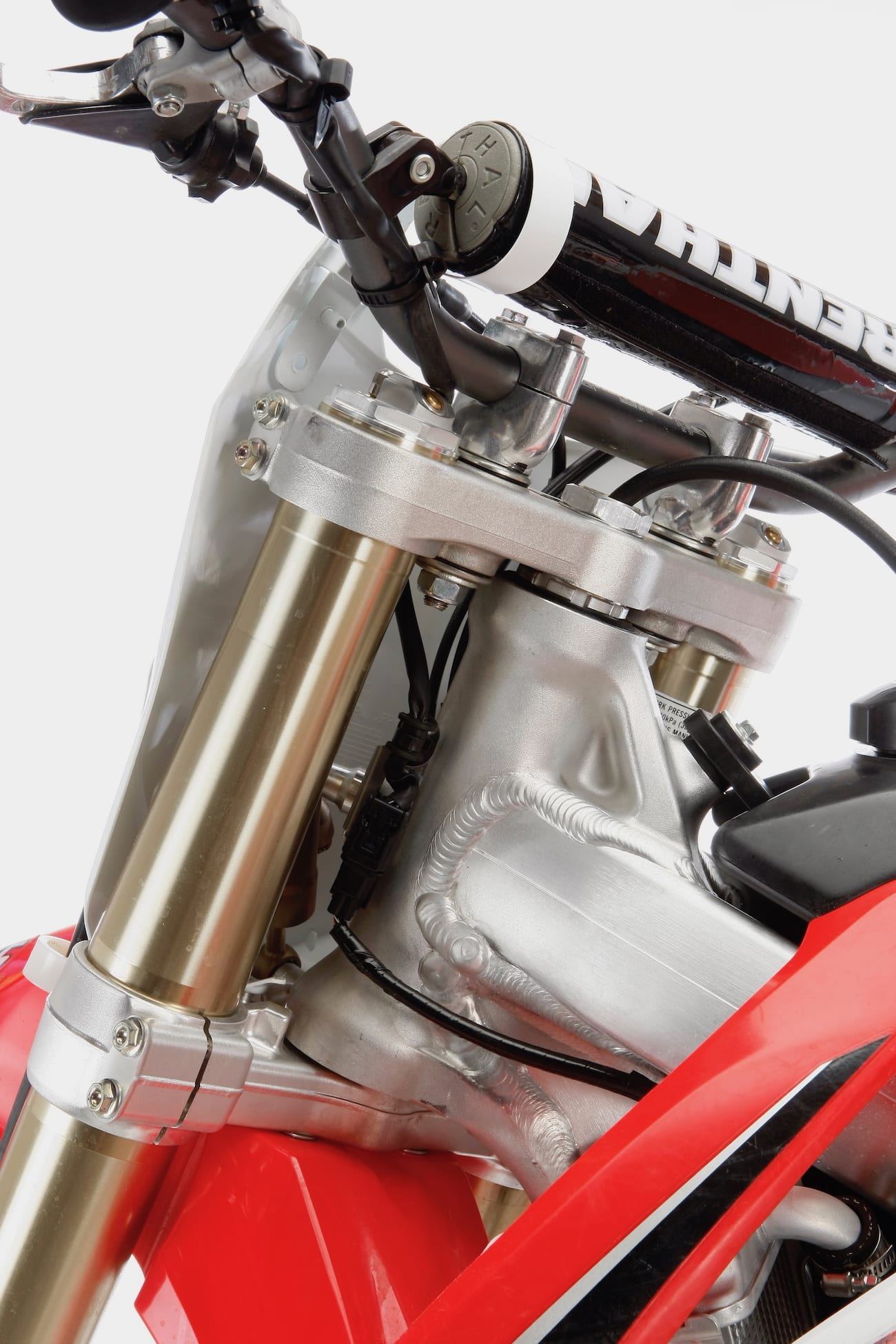



Comments are closed.